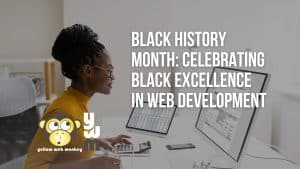Welcome to the internet’s center stage, where Google keeps you on your toes more than dancers in a Tchaikovsky ballet.
That’s right, Google will be changing its page-ranking algorithms, yet again, this June.
The constant restaging of web performance optimization may feel like a mischievous ploy to make business harder. But rest assured; by adjusting its settings and making user satisfaction the top priority, Google is ensuring internet longevity to anyone who keeps up the frenzied, evolving pace.
The imminent roll-out of Core Web Vitals is one portion of Google’s already established Page Experience metrics. These metrics are designed to further enhance online user experience in three distinct ways:
- The speed at which pages load (Largest Contentful Paint—LCP)
- How pages change (visually) as they load (Cumulative Layout Shift—CLS)
- The time it takes for users to start interacting with a page (First Input Delay—FID)
Understandably, these components greatly affect a user’s level of patience and overall online success. Even the smallest changes can make an enormous impact on their browsing and purchasing choices.
Imagine an alpine skiing race, where determining who crosses the finish line first can come down to one-hundredths of a second. It’s the same with web optimization. Websites that load faster, even by a minuscule amount, can win far more business. And pages built to support a user’s quick, wavering eye, have the endurance to make it to that finish line. There are already plenty of company statistics to prove it.
Fortunately, Google has provided resources to help isolate these metrics. Businesses just have to take the time to use them.
That’s where we come in. We know that effective website optimization requires perpetual fine-tuning. Even with established sites that are serving clients well, web developers constantly need to work backstage and manipulate the technical aspects of the show.
This process can be time-consuming. Like a dress rehearsal, each webpage needs to be tested for design, smoothness, and timing. Coding may require changes, followed by more tweaking and experimentation. All of this is accompanied by constant cost-benefit analyses, ensuring that our time and efforts make monetary sense.
The nature of web performance optimization will continue to dictate our every action. After all, over 1 billion websites compete against one another each day, all trying to snag the spotlight. No business can afford to lose its visibility or momentum. Your website must evolve and stay en pointe.
By allowing us to invest in your Core Web Vitals, you’re helping us take the next step in enhancing your website’s performance.
We’ll be on the lookout for your numbers, but you can be too. You can scan your website with Web.dev for your Lighthouse score. Anything less than 50 is a sign your Core Web Vitals need some work.
Additionally, you should monitor key pages in your Google Search Console under “Core Web Vitals” on the sidebar. Ensure you do not have any URLs classified as “poor,” as that is a good indicator you will be penalized by the new algorithm.
Together, we can stay in the running of this fast-paced race and give the internet a great show.





